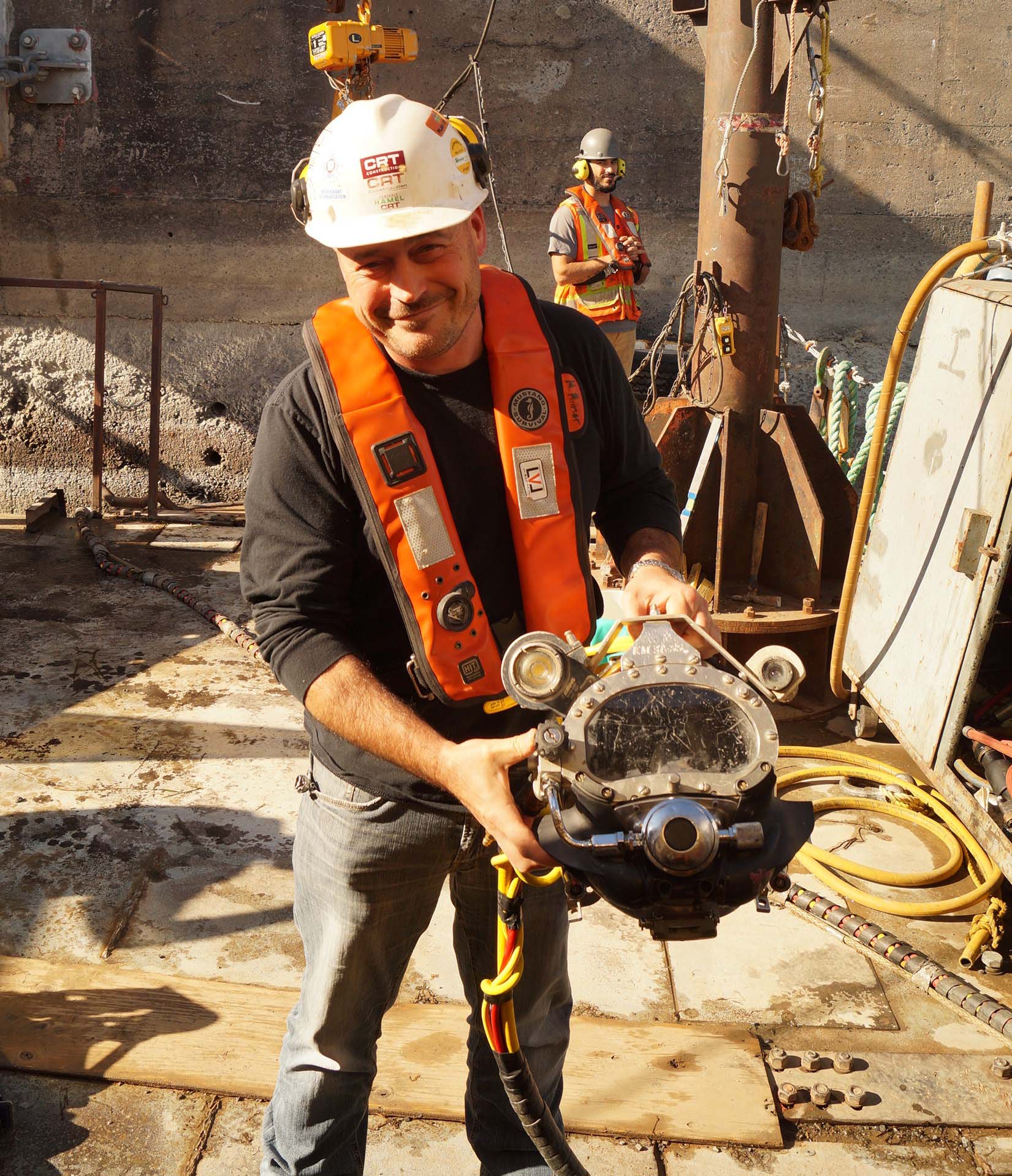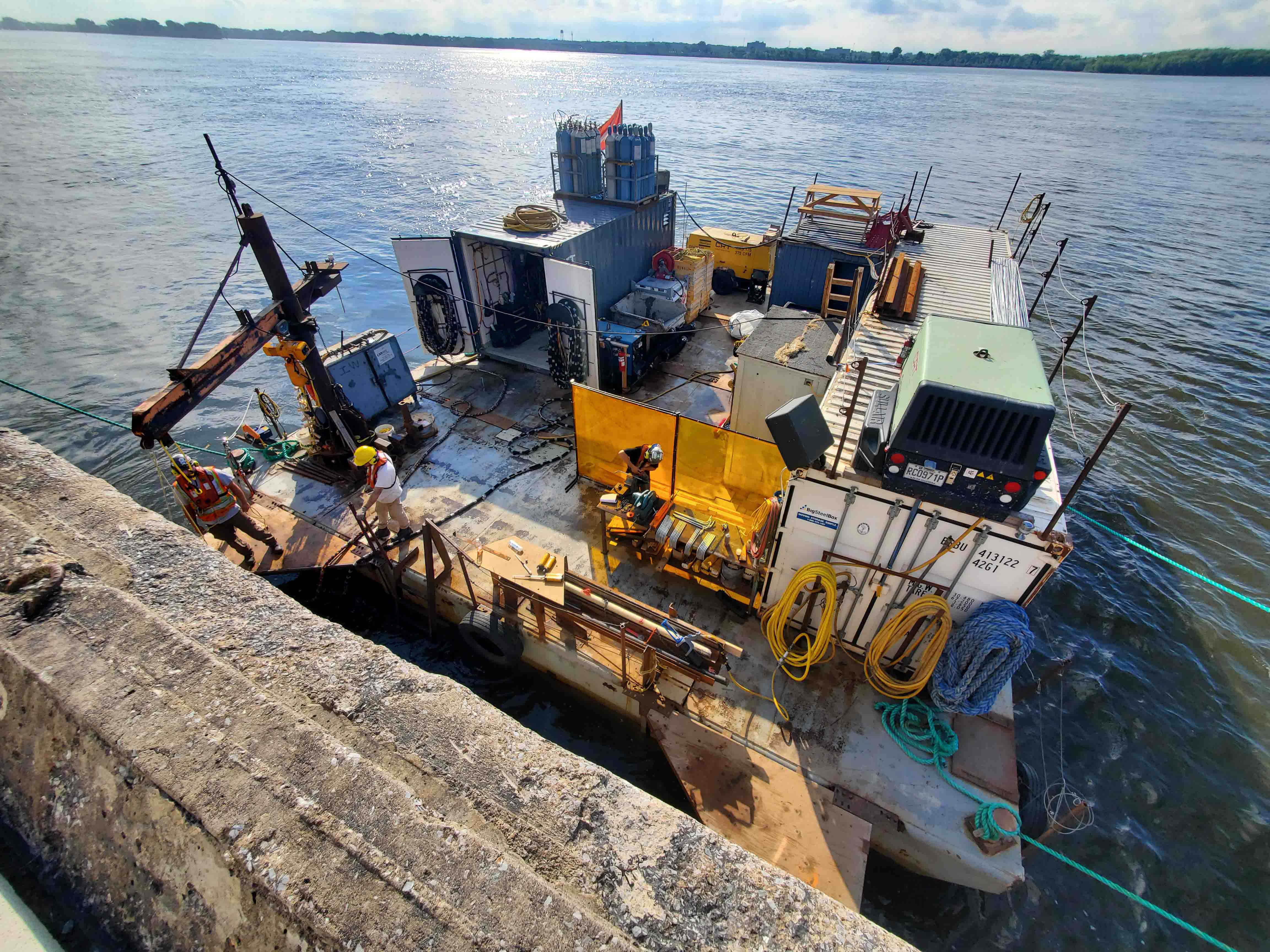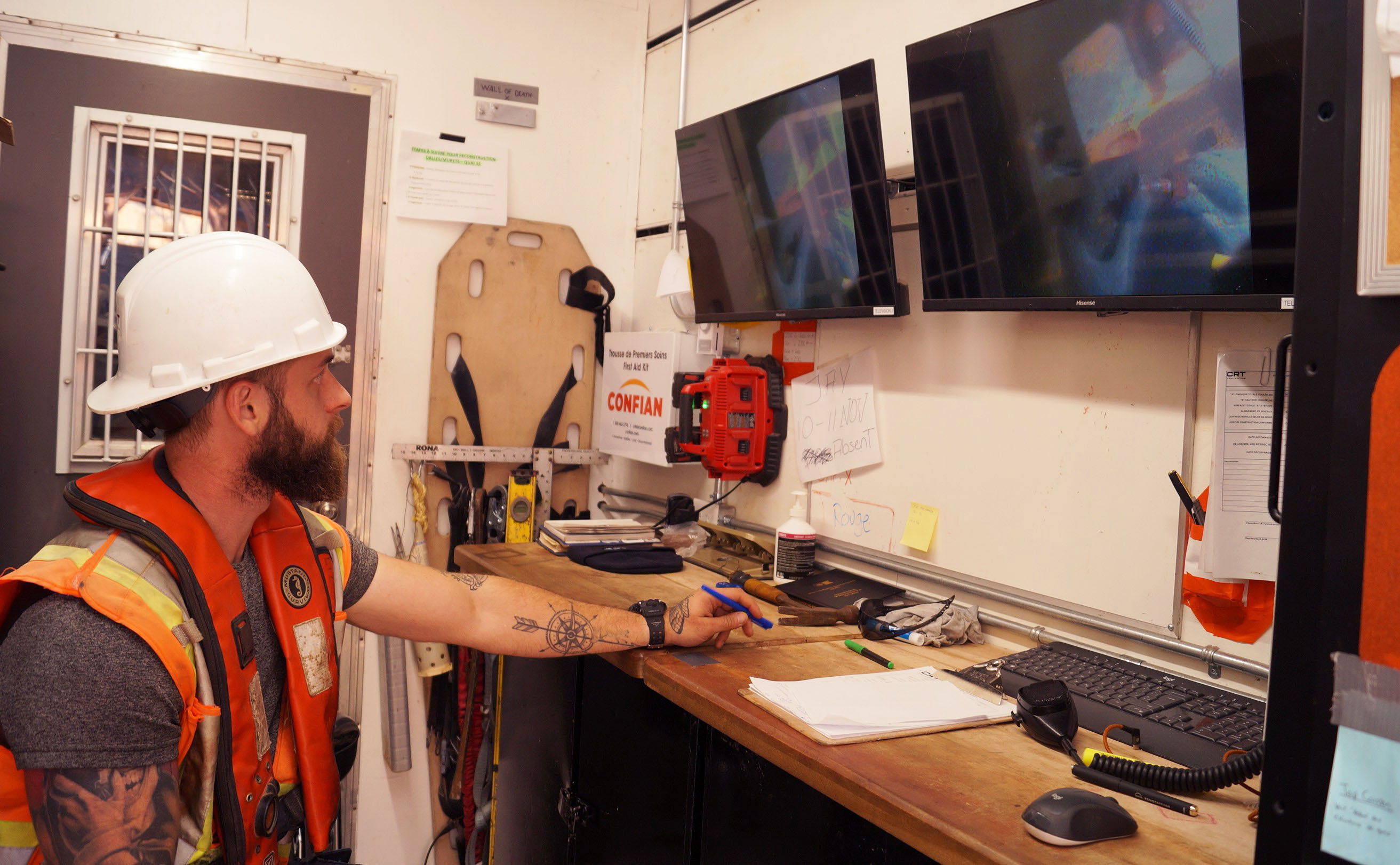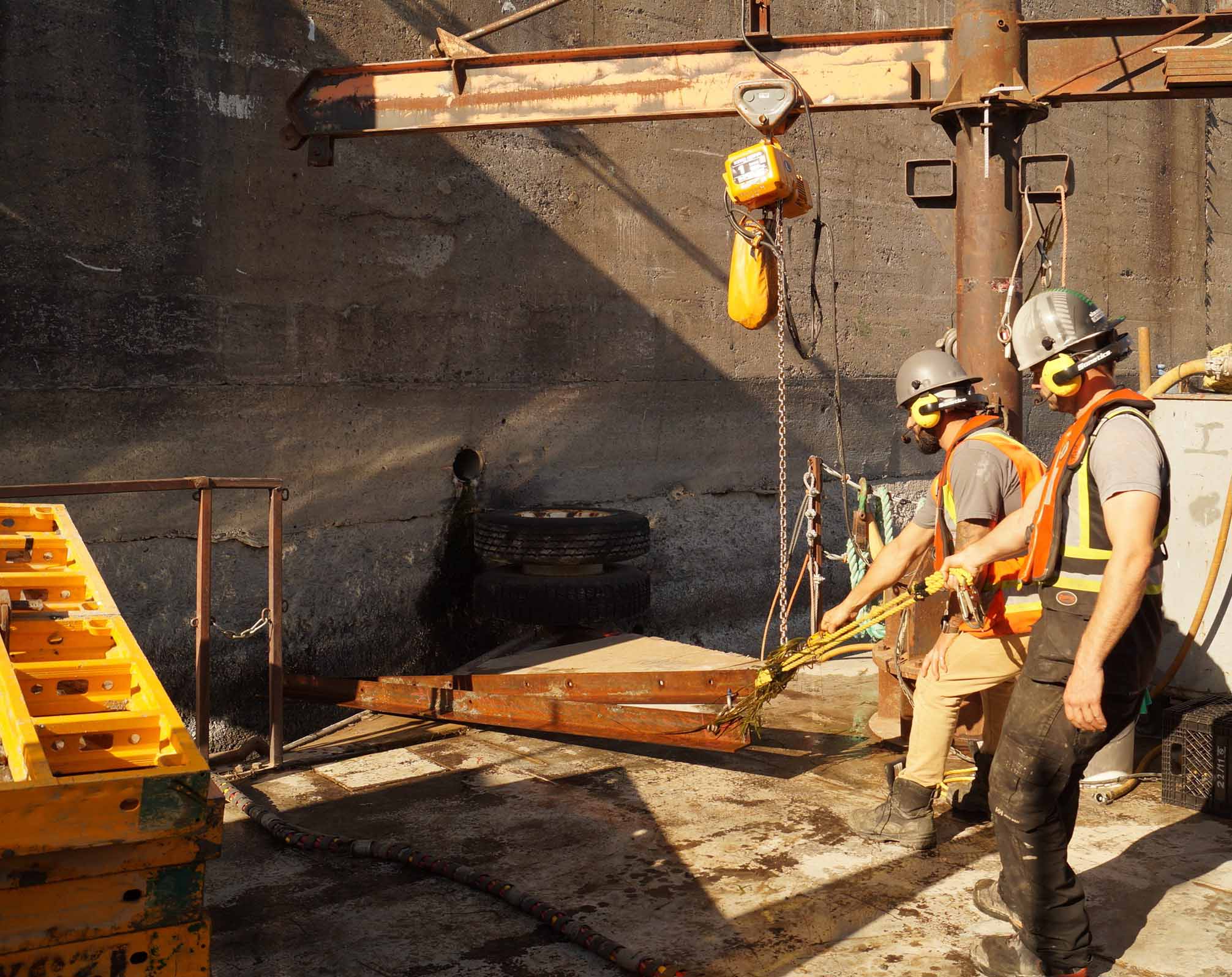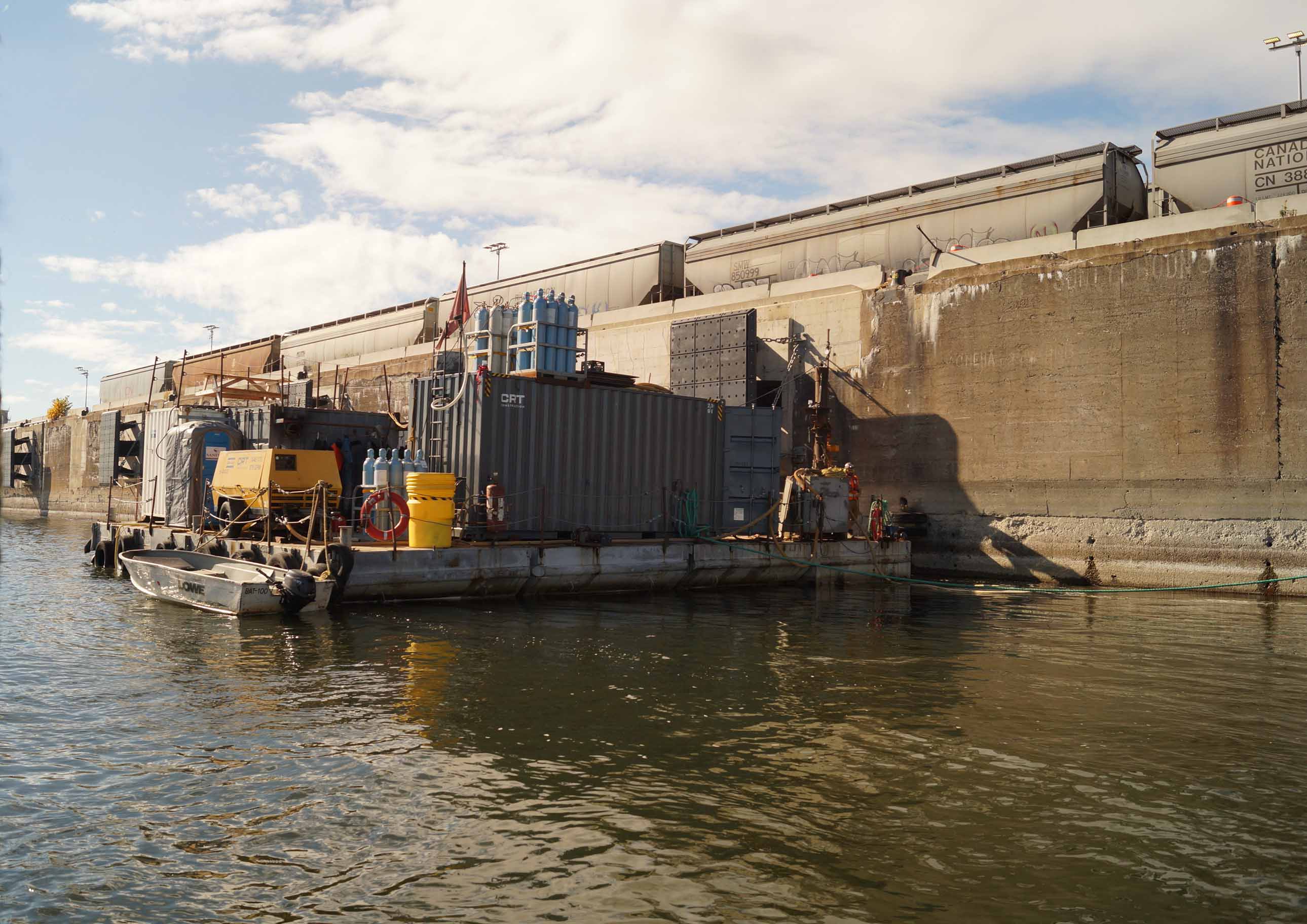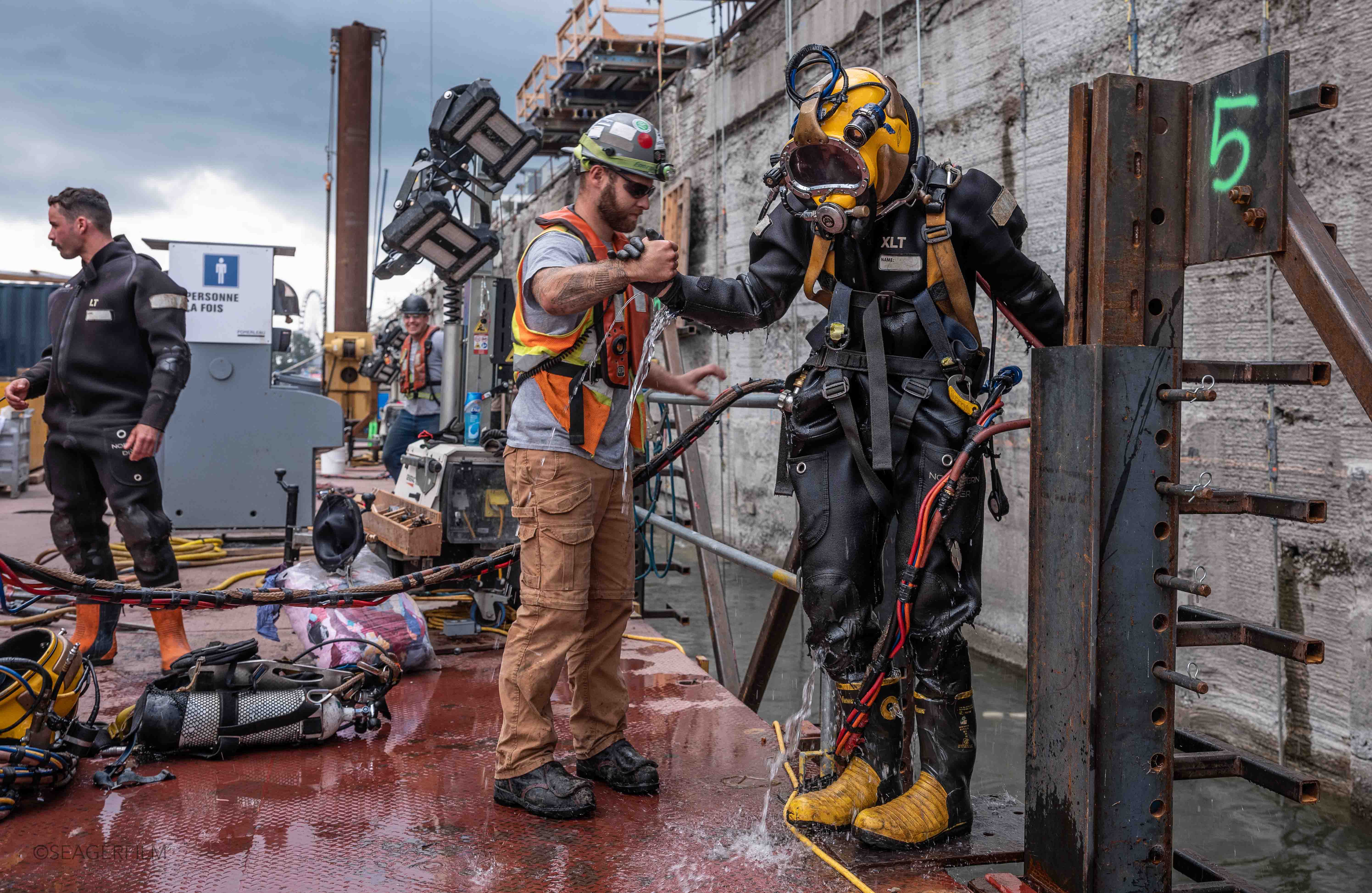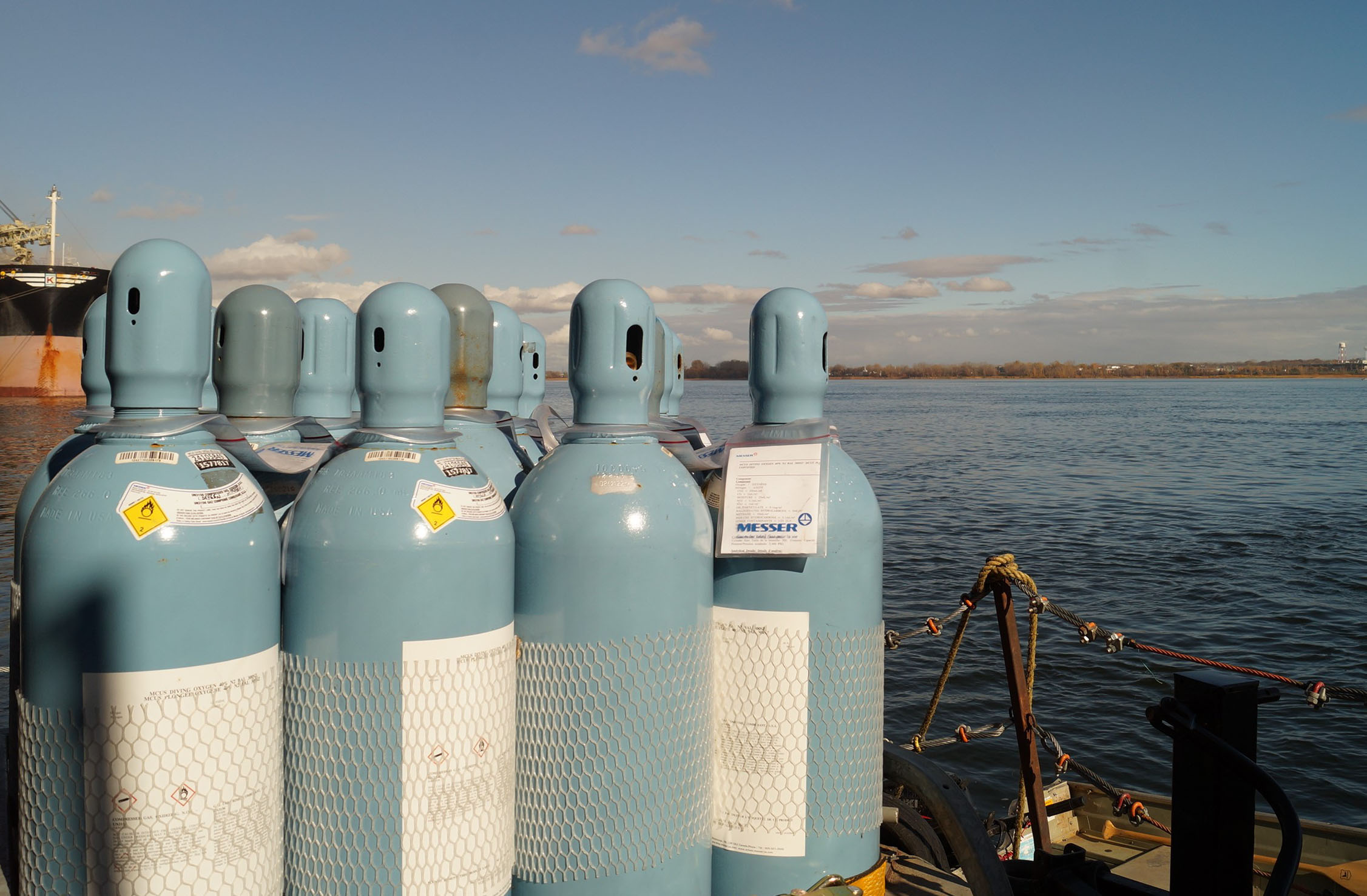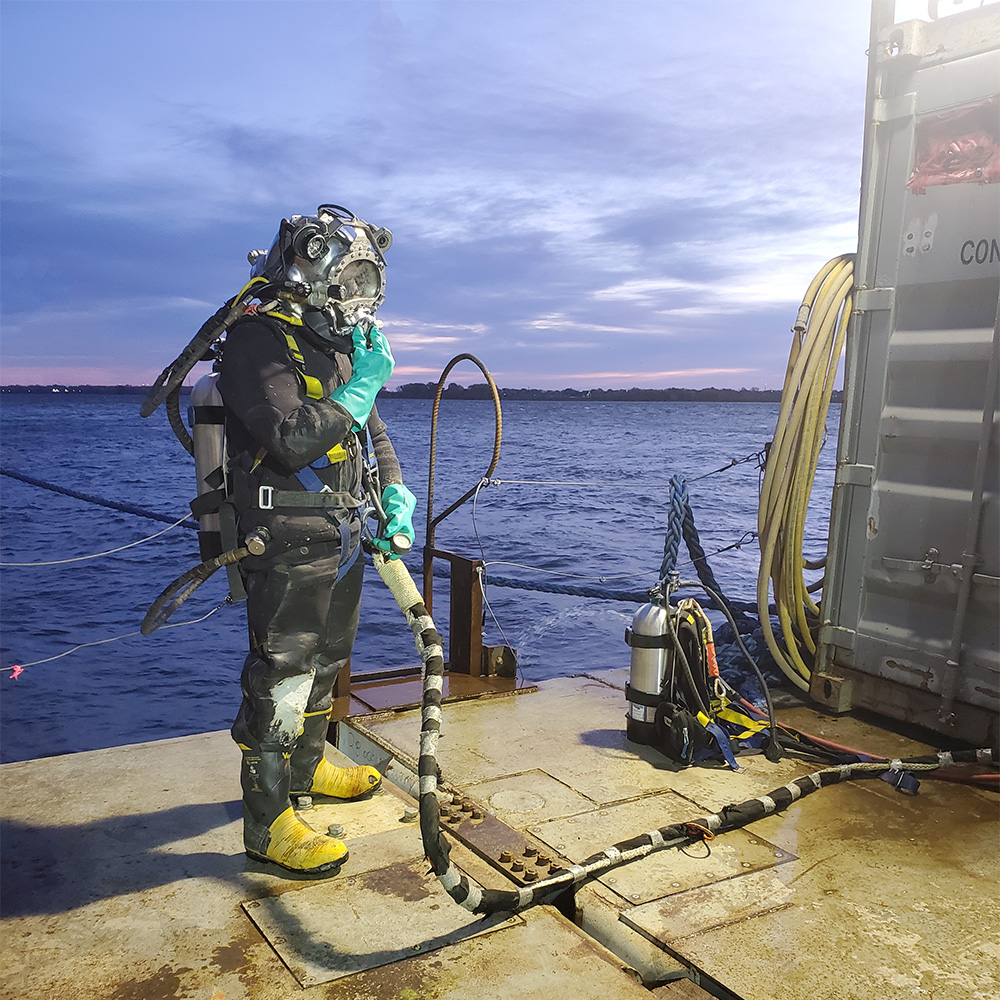
Divers: working below the surface
The diving profession is little known to the general public, but it plays a vital role in the quality and maintenance of underwater structures. At the Port of Montreal, divers are regularly called upon for various maintenance, inspection and repair work on the docks.
An array of skills
“When I tell people I’m a plongeur (French for both diver and dishwasher), they assume I work in a restaurant kitchen,” said Alex, a diver employed by CRT Construction, a company that does wharf consolidation work at the Port of Montreal. “It’s actually an unusual job that requires all-round versatility in addition to excellent physical fitness and lots of dexterity, autonomy and concentration to be able to react correctly in all circumstances.”
Their mission is to do the precision work that cannot be done with heavy machinery from the surface. The key word is versatility. “There’s not much we don’t do,” said Louis-Philippe, who also works at CRT. Here’s what he has to be able to do underwater: welding, carpentry, flame cutting, carpentry, concrete work, electricity, plumbing and blasting—in short, an array of extraordinary skills.
It’s an unusual job that requires all-round versatility in addition to excellent physical fitness and lots of dexterity, autonomy and concentration to be able to react correctly in all circumstances
Consolidating for the future
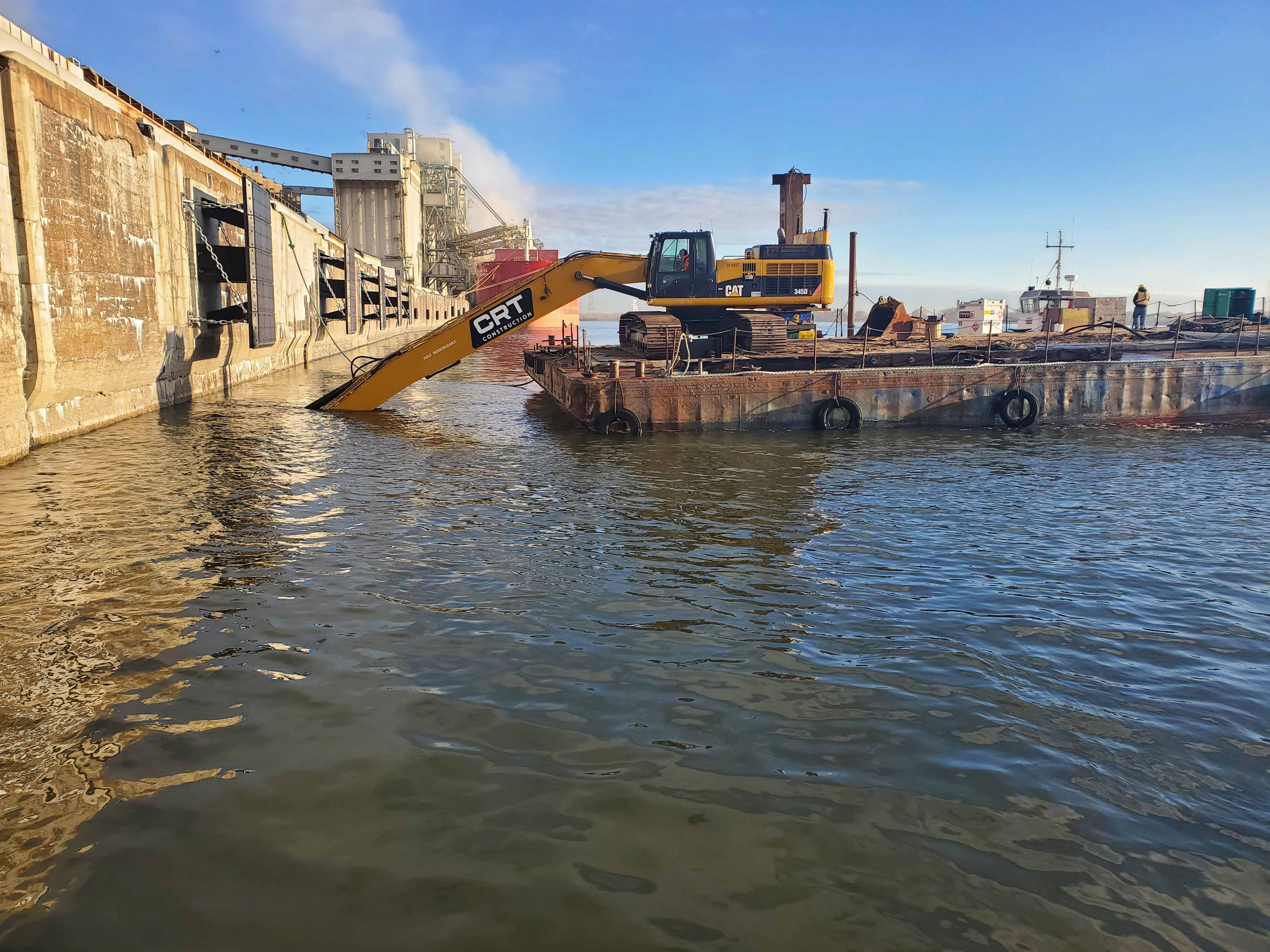
At the end of October, the team wrapped up a project to consolidate berths 50 to 52 at the Port of Montreal. “Some of the berths at the Port of Montreal are a century old. They handle two thousand vessels a year and are subject to wear and tear from the river current,” said Jonathon, the site superintendent.
What exactly is involved? This project will consolidate the wharf structure to the river bottom so that it will be able to properly support future deepening. There are several steps in the process: preparing the existing surface and installing the reinforcement; building formwork to hold the concrete in place until it sets; pouring the concrete underwater using a hose from a pump truck located on the dock; and lastly, dismantling the support structure once the concrete has set... and then starting the process all over again at the next section. From one end to the other, the team working on the project since October 2021 has built the concrete walls stretching over nine caissons, or some 300 metres of docks between Bennett Street and Viau Street.
A team effort
On the barge that serves as their control centre, office, equipment storage area and operational launch point, the divers were busy coordinating the operation at hand.
While Nathaniel was underwater carrying out a form removal operation, his colleagues on the surface were all equipped with headsets to follow what happens underwater at all times. Two screens also let them see everything he was doing, even though visibility was not optimal. “It’s really a team effort,” John said, “You can have one or two divers underwater, depending on the task. There’s always one diver on the barge ready to respond to an emergency, one in charge of communications, and the others are providing or hoisting equipment.”
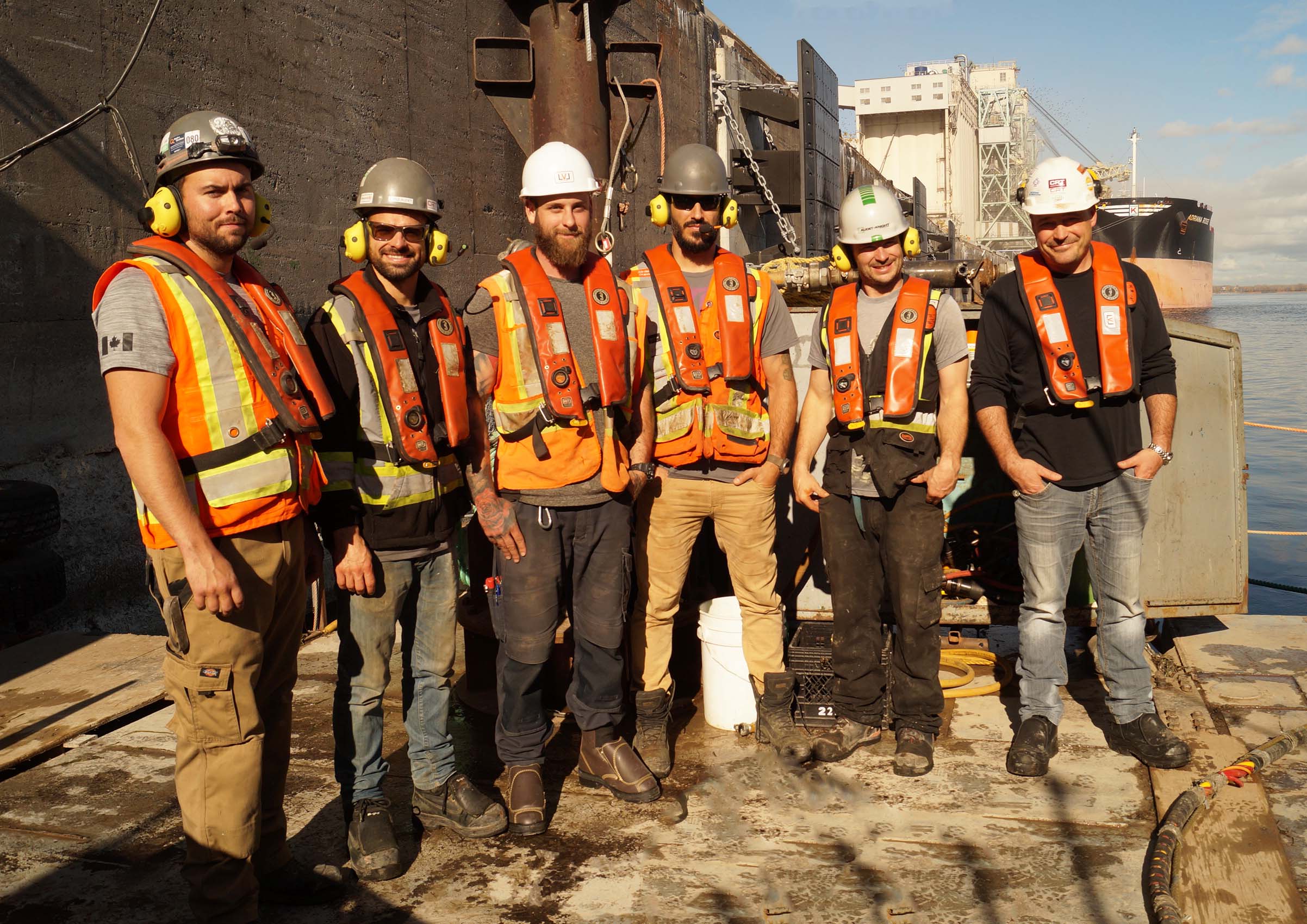
On the monitors, we saw Nathaniel’s precise and rapid movements as he methodically dismantled the formwork. Piece by piece, he dismantled the metal structure that had been put in place to pour the concrete and form the low wall at the bottom of the dock. “No one wastes time underwater,” said Louis-Philippe. From time to time, Nathaniel asked his colleagues to bring down a specific tool or to bring up parts of the structure.
Fully equipped
As for equipment, the helmet alone weighs about 15 kg... “Everything’s in there,” said John. “It’s got a light, a camera, air, hot water... And it’s sturdy enough that you can bump into just about anything without getting hurt.”
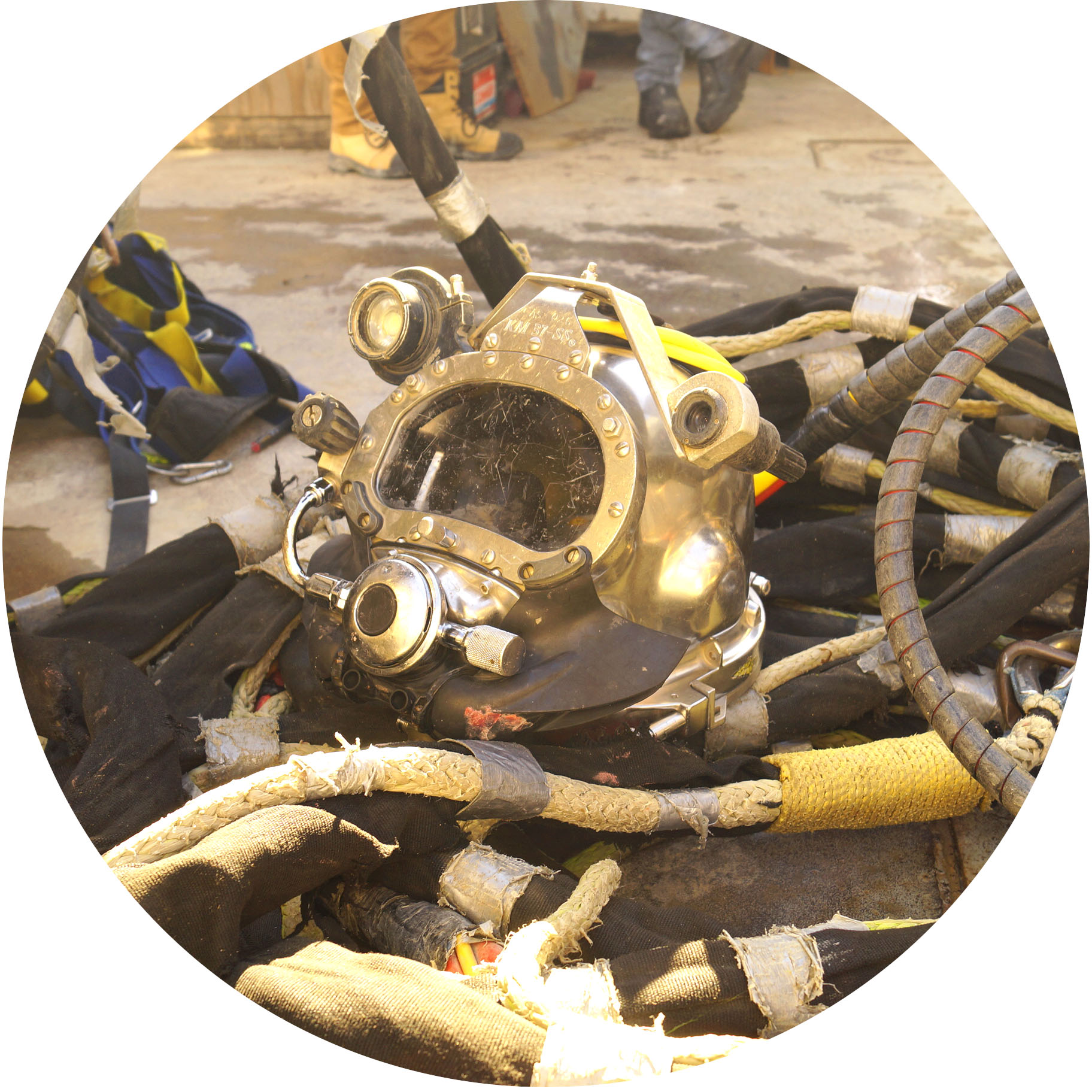
The wetsuit is powered by hot water so it can maintain body temperature underwater. An important detail when you consider that divers spend several hours underwater, with their season starting in the spring and ending in November in water that can reach six degrees Celsius. The winter is “too dangerous here. The ice blocks move quickly because of the strong current in this area. We only intervene in case of emergency.”
As for safety, nothing is left to chance: “We inspect the equipment every day. On every trip, everything is done with two or three redundancy systems.” For example, there are three different sources of oxygen supply and two sources of energy supply. This means that the divers are supplied from the barge yet still have a backup system on them in case of failure. “We do regular simulations and today, everything is super safe.”
How long does he have to dive, and to what depth? “It’s all precisely determined in our bible,” said Jonathon, namely the Canadian Defense and Civil Institute of Environmental Medicine (DCIEM) tables. These diving and decompression tables were developed by the Canadian Forces, volunteer divers and several well-known hyperbaric physicians. “We have a code to follow, which shows the maximum time spent underwater based on depth.”

